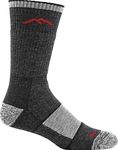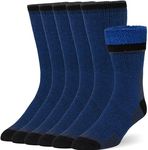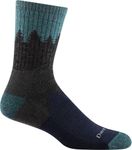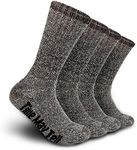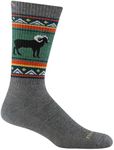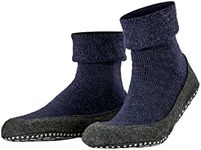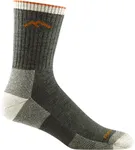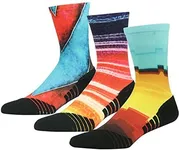Buying Guide for the Best Wool Socks
When it comes to picking the right wool socks, it's important to consider a few key factors to ensure you get the best fit for your needs. Wool socks are known for their warmth, comfort, and moisture-wicking properties, making them a great choice for various activities and weather conditions. By understanding the key specifications, you can make an informed decision and find the perfect pair of wool socks for you.Material CompositionMaterial composition refers to the blend of fibers used in the socks. Wool socks can be made from 100% wool or a blend of wool and other materials like nylon, polyester, or spandex. Pure wool socks offer maximum warmth and natural moisture-wicking properties, making them ideal for cold weather. Blended wool socks, on the other hand, provide added durability, elasticity, and sometimes a softer feel. If you need socks for extreme cold, go for higher wool content. For everyday wear or activities requiring more durability and stretch, a blend might be more suitable.
ThicknessThickness refers to how thick or thin the socks are. Wool socks come in various thicknesses, from lightweight to heavyweight. Lightweight wool socks are great for everyday use, providing comfort without too much bulk. Midweight wool socks offer a balance of warmth and cushioning, making them suitable for hiking or moderate outdoor activities. Heavyweight wool socks provide maximum insulation and cushioning, ideal for extremely cold conditions or winter sports. Choose the thickness based on the level of warmth and cushioning you need for your specific activities.
Fit and SizeFit and size are crucial for comfort and performance. Wool socks should fit snugly without being too tight or too loose. A proper fit ensures that the socks stay in place, prevent blisters, and provide optimal warmth. Wool socks often come in standard sizes (small, medium, large) or specific shoe size ranges. To find the right fit, refer to the sizing chart provided by the manufacturer and consider your shoe size and foot shape. If you have wider feet, look for socks with more stretch or a wider fit.
CushioningCushioning refers to the amount of padding in the socks, which can vary from minimal to extra cushioned. Minimal cushioning provides a closer fit and is suitable for activities where you need more control and sensitivity, like running. Moderate cushioning offers a balance of comfort and support, making it ideal for hiking or everyday wear. Extra cushioning provides maximum comfort and shock absorption, perfect for long hikes, heavy-duty work, or cold weather. Choose the level of cushioning based on the type of activity and the amount of comfort and support you need.
Moisture-WickingMoisture-wicking refers to the sock's ability to draw moisture away from your skin, keeping your feet dry and comfortable. Wool naturally has excellent moisture-wicking properties, but some wool socks are designed with enhanced moisture-wicking technology. This is especially important if you plan to wear the socks for physical activities or in warm conditions. Look for socks that specifically mention moisture-wicking features if you need extra assurance of dry feet during your activities.
DurabilityDurability refers to how well the socks can withstand wear and tear over time. Wool socks with reinforced heels and toes, or those blended with synthetic fibers like nylon or polyester, tend to be more durable. If you plan to use the socks for rigorous activities or want them to last longer, look for features that enhance durability. Consider your usage patterns and choose socks that can handle the level of wear and tear you expect.

